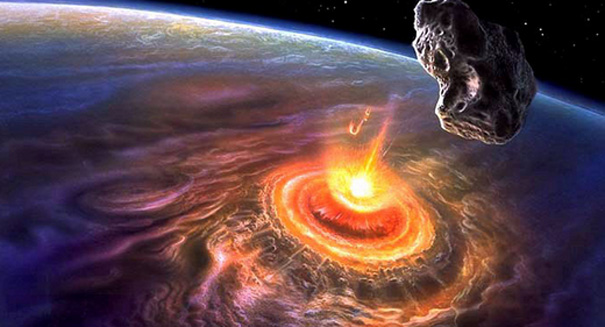
The asteroid strike rate is far higher than previously thought, according to astronomers.
Everyone around the world was caught off guard when earlier this year an asteroid struck Russia, injuring more than 1,000 people. However, researchers are finding that that may not be the only occurrence to happen in the near future. They have discovered that similar rocks to the one that exploded over Chelyabinsk are racing toward Earth’s atmosphere at an uncomfortably high rate.
The study that recorded these findings is published in the journal Nature and concludes that early warning systems need to be put in place to prevent future hits to Earth.
“Having some sort of system that scans the sky almost continuously and looks for these objects just before they hit the Earth, that probably is something worth doing,” Lead author Professor Peter Brown, from the University of Western Ontario, Canada, told the BBC World Service’s Science in Action program. “In the case of Chelyabinsk, a few days’ to a week’s warning would have been valuable.”
An international team of scientists studied data collected by US government sensors and infrared sensors. Those sensors had been placed around the globe to detect any nuclear weapon threats, but can also see blasts from asteroid impacts.
The data amounted to 20 years’ worth of observations, and from that the scientists were able to determine the frequency of asteroid impact. They found a surprising 60 asteroids up to 20 meters in size had smashed into Earth’s atmosphere.
The asteroid that hit Russia was 19 meters.
Scientists realize that these findings mean they had underestimated the risk of getting hit by asteroids. The rate of asteroid collisions from rocks tens of meters wide is between two and 10 times higher than previously thought.
“Something like Chelyabinsk, you would only expect every 150 years on the basis of the telescopic information. But when you look at our data and extrapolate from that, we see that these things seem to be happening every 30 years or so,” said Prof Brown.
With this new knowledge, the research team believes more effort should go into creating early warning systems, before another incident like Russia’s asteroid happens, or worse.
The new systems would not need to detect every asteroid that comes in contact with Earth’s atmosphere, as it largely stops them. “But what might make sense are systems that find something a few days or weeks before they hit,” said Brown. “to tell you where on the Earth and when they will hit. That would allow some warning to be given to the civil defense authorities.”
Leave a Reply